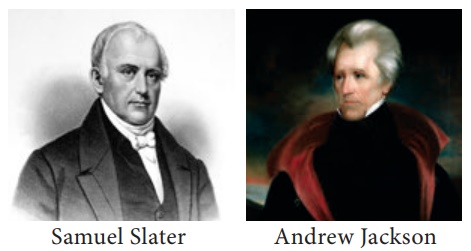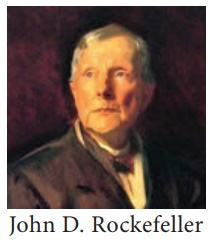Chapter: 9th Social Science : History: Industrial Revolution
Second Industrial Revolution in United States of America
Second Industrial
Revolution in United States of America
A shift from manual labour-based to more technical and
machine-based manufacturing industry marked the Industrial Revolution in the
United States. Samuel Slater, a citizen of England, having worked at a cotton
mill from age 10, had gained enough experience to operate a mill. On learning
that Americans were interested in the new techniques, Slater departed for New
York in 1789 illegally. Slater offered his services to Moses Brown, a leading
Rhode Island industrialist, who had earlier made an unsuccessful attempt to
operate a mill. Brown agreed and in consequence the mill became operational in
1793, being the first water-powered roller spinning textile mill in the
Americas. By 1800, Slater’s mill had been duplicated by many other
entrepreneurs as Slater grew wealthier and his techniques more and more
popular. Andrew Jackson, the U.S. President hailed him as “Father of the
American Industrial Revolution.”![]()

The United States in the nineteenth century began to show
technological innovation. Robert Fulton established the steamboat service on
the Hudson River. Samuel F.B. Morse’s invention of the telegraph and Elias Howe’s
invention of the sewing machine came before the Civil war (1860–1865).
After the Civil War, industrialisation went on at a frantic pace.
In 1869, the first transcontinental railroad was completed to transport people,
raw materials and products. There was unprecedented urbanisation and
territorial expansion in the US. As a result, between 1860 and 1900, fourteen
million immigrants came to the country, providing workers for a variety of
industries. The invention of electric bulb by Thomas Alva Edison (1879) and
telephone by Alexander Graham Bell (1885) changed the world beyond recognition.
Andrew Carnegie established the first steel mills in the U.S for mass production. He acquired business interests in the mines that produced the raw materials for steel, the mills and ovens that created the final product and the railroad and shipping lines that transported goods, thus controlling every aspect of the steelmaking process. John D. Rockefeller merged the operation of many large companies to form a trust. His Standard Oil Trust came to monopolise 90% of the industry and reduced competition.

These monopolies affected John D. Rockefeller the smaller companies and even threatened them. The U.S.
government supported the industrial growth by providing land for construction
of railroads and protected the American industry from foreign competition.
The Industrial Revolution quickened the process of the transition
of the United States from a rural to an urban society. Young people raised on
farms saw greater opportunities in the cities and moved there, as did millions
of immigrants from Europe. Providing housing for all the new residents of
cities was a problem, and many workers found themselves living in urban slums;
open sewers ran alongside the streets, and the water supply was often
contaminated, causing disease.
Related Topics